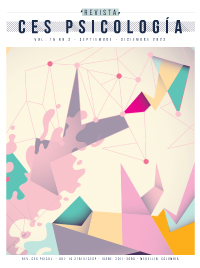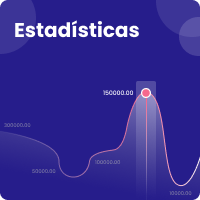¿Todos los grupos felices son productivos? Interacción entre el afecto positivo grupal y el desempeño laboral grupal: estudio exploratorio
DOI:
https://doi.org/10.21615/cesp.7130Palabras clave:
afecto positivo grupal, desempeño grupal, grupo feliz-productivo, gestión de la organizaciónResumen
La comprensión de la relación entre las emociones positivas (como la satisfacción laboral) y el desempeño laboral, ha generado variedad de estudios y tesis como la del trabajador feliz-productivo. No obstante, aún se requiere ampliar y profundizar en aspectos como el desarrollo de una perspectiva multinivel que permita identificar variables que componen grupos felices y productivos en las organizaciones. A partir del concepto de sinergia del bienestar-productivo sostenible (SBPS) y su propuesta de cuatro tipos de interacción entre el bienestar y el desempeño laboral: 1) Grupo feliz-productivo, 2) Grupo infeliz-improductivo, 3) Grupo feliz-improductivo, y 4) Grupo infeliz-productivo, el objetivo principal de este trabajo es analizar la relación entre el afecto positivo grupal (entusiasmo, optimismo, satisfacción, comodidad, relajación) y el desempeño grupal (intra-rol, extra-rol). La muestra está compuesta por 584 trabajadores/as (63.6% mujeres), agregados en 91 equipos de trabajo pertenecientes a 14 Pequeñas y Medianas Empresas (PyMEs) españolas. Mediante un análisis de conglomerados, los resultados determinaron la existencia de cuatro tipos de interacción o patrones entre el afecto positivo grupal y el desempeño grupal: Feliz-productivo (41.8%), Infeliz-improductivo (20.9%), Feliz-improductivo (29.7%), e Infeliz-productivo (7.7 %). Los resultados pueden ayudar a las organizaciones a tomar acciones respecto a la evaluación de riesgos psicosociales, gestión del desempeño y rediseño de grupos.
Descargas
Referencias bibliográficas
Abdi, T., Peiró, J., Ayala, Y., & Zappalà, S. (2018). Four Wellbeing Patterns and their Antecedents in Millennials at Work. International Journal of Environmental Research and Public Health, 16(1), 25. https://doi.org/10.3390/ijerph16010025
Amabile, T. M. (1997). Motivating creativity in organizations: On doing what you love and loving what you do. California Management Review, 40(1), 39–58. https://doi.org/10.2307/41165921
Ayala, Y., Peiró, J. M., Tordera, N., Lorente, L., & Yeves, J. (2016). Job Satisfaction and Innovative Performance in Young Spanish Employees: Testing New Patterns in the Happy-Productive Worker Thesis-A Discriminant Study. Journal of Happiness Studies, 18(5), 1377–1401. https://doi.org/10.1007/s10902-016-9778-1
Bakker, A. B., & Demerouti, E. (2017). Job demands–resources theory: Taking stock and looking forward. Journal of occupational health psychology, 22(3), 273. https://doi.org/10.1037/ocp0000056
Baron, R.A., Hmieleski, K.M., & Henry, R.A. (2012). Entrepreneurs’ dispositional positive affect: The potential benefits - and potential costs - of being “up”. Journal of Business Venturing, 27(3), 310. https://doi.org/10.1016/j.jbusvent.2011.04.002
Barrett, L. F., Lewis, M., & Haviland-Jones, J.M. (Eds.) (2018). Handbook of emotions. Guilford Press.
Barsade, S. G., & Gibson, D. E. (1998). Group emotion: A view from top and bottom. In D. H Gruenfeld (Ed.), Research on managing groups and teams, 1. Composition (pp. 81-102). Elsevier Science/JAI Press.
Barsade, S. G., & Gibson, D. E. (2007). Why does affect matter in organizations?. The Academy of Management Perspectives, 21(1), 36-59. https://doi.org/10.5465/AMP.2007.24286163
Barsade, S. G., & Knight, A. P. (2015). Group Affect. Annual Review of Organizational Psychology and Organizational Behavior, 2(1), 21–46. https://doi.org/10.1146/annurev-orgpsych-032414-111316
Bliese, P. D. (2000). Within-group agreement, non-independence, and reliability: Implications for data aggregation and analysis. In K. J. Klein, S. J. Kozlowski, K. J. Klein, & S. J. Kozlowski (Eds.), Multilevel theory, research, and methods in organizations: Foundations, extensions, and new directions (pp. 349–381). Jossey-Bass.
Bowling, N. A. (2007). Is the job satisfaction-job performance relationship spurious? A meta-analytic examination. Journal of Vocational Behavior, 71(2), 167-185. https://doi.org/10.1016/j.jvb.2007.04.007
Burke, M. J., Finkelstein, L. M., & Dusig, M. S. (1999). On average deviation indices for estimating interrater agreement. Organizational Research Methods, 2, 49–68. https://doi.org/10.1177/109442819921004
Chan, D. (1998). Functional relations among constructs in the same content domain at different levels of analysis: A typology of composition models. Journal of Applied Psychology, 83(2), 234–246. https://doi.org/10.1037/0021-9010.83.2.234
Chi, N.-W., & Lam, L. W. (2021). Is Negative Group Affective Tone Always Bad for Team Creativity? Team Trait Learning Goal Orientation as the Boundary Condition. Group & Organization Management, 47(1), 72–108. https://doi.org/10.1177/10596011211011336
Collins, A. L., Jordan, P. J., Lawrence, S. A., & Troth, A. C. (2015). Positive affective tone and team performance: The moderating role of collective emotional skills. Cognition and Emotion, 30(1), 167–182. https://doi.org/10.1080/02699931.2015.1043857
Feldman, D. C. (1988). Managing careers in organization. Scott, Foresman and Company.
Fredrickson, B. L. (1998). What good are positive emotions? Review of General Psychology. Special Issue: New Directions in Research on Emotion, 2, 300-319. https://doi.org/10.1037/1089-2680.2.3.300
Fredrickson, B. L. (2001). The role of positive emotions in positive psychology: The broaden-and-build theory of positive emotions. American Psychologist: Special Issue, 56, 218-226. https://doi.org/10.1037//0003-066x.56.3.218
Fredrickson, B. L., & Cohn, M. L. (2008). Positive emotions. In M. Lewis, J. M. Haviland-Jones, & L. F. Barrett (Eds.), Handbook of emotions (pp. 777-796). Guilford Press.
González-Romá, V., & Hernández, A. (2017). Multilevel Modeling: Research-Based Lessons for Substantive Researchers. Annual Review of Organizational Psychology and Organizational Behavior, 4(1), 183–210. https://doi.org/10.1146/annurev-orgpsych-041015-062407
Goodman, S. A., & Svyantek, D. (1999). Person–organization fit and contextual performance: Do shared values matter. Journal of Vocational Behavior, 55, 254–275. https://doi.org/10.1006/jvbe.1998.1682
Hollenbeck, J. R., Beersma, B., & Schouten, M. E. (2012). Beyond team types and taxonomies: A dimensional scaling conceptualization for team description. Academy of Management Review, 37(1), 82–106. https://psycnet.apa.org/record/2012-02032-006
Huang, L.-C., Liu, Y., Cheung, G. W., & Sun, J. (2022). A Multilevel Study of Group Affective Tone and Team Innovation: A Moderated Mediation Model. Group & Organization Management, 47(6), 1259–1297. http://doi.org/10.1177/10596011211029411
Ilgen, D. R. (1999). Teams embedded in organizations: Some implications. American Psychologist, 54(2), 129–139. https://doi.org/10.1037/0003-066x.54.2.129
James, L. R., Demaree, R. G., & Wolf, G. (1984). Estimating within group interrater reliability with and without response bias. Journal of Applied Psychology, 69(1), 85–98. https://doi.org/10.1037/0021-9010.69.1.85
Jewell, L.N., & Reitz, H.J (1981). Group Effectiveness in Organizations. Scott Foresman.
Judge, T.A., Thoresen, C.J., Bono, J.E., & Patton, G.K. (2001). The job satisfaction-job performance relationship: a qualitative and quantitative review, Psychological Bulletin, 127(3), 376-407, https://doi.org/10.1037//0033-2909.127.3.376
Knight, A. P., & Eisenkraft, N. (2015). Positive is usually good, negative is not always bad: The effects of group affect on social integration and task performance. Journal of Applied Psychology, 100(4), 1214–1227. https://doi.org/10.1037/apl0000006
Koopmans, L., Bernaards, C. M., Hildebrandt, V. H., Schaufeli, W. B., de Vet, H. C. W., & van der Beek, A. J. (2011). Conceptual frameworks of individual work performance A systematic review. Journal of Occupational and Environmental Medicine, 53(8), 856-866. https://doi.org/10.1097/JOM.0b013e318226a763
Kunin, T. (1955). The construction of a new type of attitude measure. Personnel Psychology, 8, 65-67.
LeBreton, J. M., & Senter, J. L. (2008). Answers to 20 questions about interrater reliability and interrater agreement. Organizational Research Methods, 11(4), 815–852. https://doi.org/10.1177/1094428106296642
Mason, C.M., & Griffin, M.A (2003). Group absenteeism and positive affective tone: A longitudinal study. J. Organ. Behav, 24, 667–687. http://www.jstor.org/stable/4093736
Meneghel, I., Salanova, M., & Martínez, I. M. (2016). Feeling Good Makes Us Stronger: How Team Resilience Mediates the Effect of Positive Emotions on Team Performance. Journal of Happiness Studies, 17(1), 239–255. https://doi.org/10.1007/s10902-014-9592-6
Mischel, W. (2014). The marshmallow test: understanding self-control and how to master it. Random House.
Morgeson, F. P., & Humphrey, S. E. (2008). Job and team design: Toward a more integrative conceptualization of work design. In Research in personnel and human resources management, 39-91. Emerald Group Publishing Limited. https://doi.org/10.1016/s0742-7301(08)27002-7
Motowidlo, S. J. (2003). Job performance. In W. C. Borman, D. R. Ilgen, & R. J. Klimoski (Eds.), Handbook of psychology: Industrial and organizational psychology, Vol. 12, pp. 39–53). John Wiley & Sons, Inc.
Nunnally, J. C., & Bernstein, I. H. (1994). Psychometric theory (3rd ed.). MacGraw-Hill Books Company.
Oishi, S., Diener, E., & Lucas, R. E. (2007). The Optimum Level of Well-Being: Can People Be Too Happy? Perspectives on Psychological Science, 2(4), 346–360. https://doi.org/10.1111/j.1745-6916.2007.00048.x
Peiró, J. M., Ayala, Y., Tordera, N., Lorente, L., & Rodríguez, I. (2014). Bienestar sostenible en el trabajo: Revisión y reformulación. Papeles del psicólogo,35(1), 3-13. http://www.redalyc.org/articulo.oa?id=77830184002
Peñalver, J., Salanova, M., & Martínez, I. M. (2020). Group Positive Affect and Beyond: An Integrative Review and Future Research Agenda. International Journal of Environmental Research and Public Health, 17(20), 7499. https://doi.org/10.3390/ijerph17207499
Peñalver, J., Salanova, M., Martínez, I. M., & Schaufeli, W. B. (2019). Happy-productive groups: How positive affect links to performance through social resources. The Journal of Positive Psychology, 14(3), 377–392. https://doi.org/10.1080/17439760.2017.1402076
Pérez-Nebra, A.R., Viana, B.S., Lira, E., Martín-Hernandez, P., Gracia-Pérez, M.L., & Gil-Lacruz, M. (2022). The work design contribution to educational workers’ sustainable wellbeing and performance patterns. Front. Psychol. 13, 1020942. https://doi.org/10.3389/fpsyg.2022.1020942
Podsakoff, P. M., MacKenzie, S. B., & Podsakoff, N. P. (2012). Sources of method bias in social science research and recommendations on how to control it. Annual Review of Psychology, 63(1), 539– 569. https://doi.org/10.1146/annurev-psych-120710-100452
Rhee, S. Y. (2007). Group emotions and group outcomes: The role of group-member interactions. Research on Managing Groups and Teams, 10, 65–95. https://doi.org/10.1016/s1534-0856(07)10004-9
Rubio-Hurtado, M.-J., & Vilà-Baños, R. (2017). El análisis de conglomerados bietápico o en dos fases con SPSS. REIRE. Revista d’Innovació i Recerca en Educació, 10(1), 118-126. http://doi.org/10.1344/reire2017.10.11017
Salanova, M., Llorens, S., Cifre, E., & Martínez, I. M. (2012). We Need a Hero! Toward a Validation of the Healthy and Resilient Organization (HERO) Model. Group & Organization Management, 37(6), 785–822. https://doi.org/10.1177/1059601112470405
Seligman, M. E. P. (1999). The president’s address. American Psychologist, 54, 559-562.
Sender, G., Nobre, G. C., Armagan, S., & Fleck, D. (2020). In search of the Holy Grail: a 20-year systematic review of the happy-productive worker thesis. International Journal of Organizational Analysis, 29(5), 1199–1224. https://doi.org/10.1108/ijoa-09-2020-2401
Stankevičiūtė, Ž., & Savanevičienė, A. (2018). Designing Sustainable HRM: The Core Characteristics of Emerging Field. Sustainability, 10(12), 4798. https://doi.org/10.3390/su10124798.
Taris, T.W., & Schreurs, P.J.G. (2009). Well-being and organizational performance: an organizational level test of the happy-productive worker hypothesis, Work and Stress, 23(2), 120-136, https://doi.org/10.1080/02678370903072555
Tugade, M. M., & Fredrickson, B. L. (2004). Resilient individuals use positive emotions to bounce back from negative emotional experiences. Journal of Personality and Social Psychology, 86(2), 320–333. https://doi.org/10.1037/0022-3514.86.2.320
Van Knippenberg, D., Kooij-de Bode, H. J. M., & van Ginkel, W. P. (2010). The Interactive Effects of Mood and Trait Negative Affect in Group Decision Making. Organization Science, 21(3), 731–744. https://doi.org/10.1287/orsc.1090.0461
Wilson, M. G., Dejoy, D. M., Vandenberg, R. J., Richardson, H. A., & Mcgrath, A. L. (2004). Work characteristics and employee health and well-being: Test of a model of healthy work organization. Journal of Occupational and Organizational Psychology, 77(4), 565–588. https://doi.org/10.1348/0963179042596522
Wright, T., & Cropanzano, R. (2007). The Happy/Productive Worker Thesis Revisited. Research in Personnel and Human Resources Management, 26, 269–307. https://doi.org/10.1016/s0742-7301(07)26006-2
Descargas
Publicado
Cómo citar
Número
Sección
Licencia
Derechos de autor 2023 Jonathan Peñalver, Marisa Salanova, Isabel M. Martínez

Esta obra está bajo una licencia internacional Creative Commons Atribución-NoComercial-CompartirIgual 4.0.
Revista CES Psicología ISSN 2011 3080
Facultad de Psicología, Universidad CES Primera edición 2008. Última actualización Mayo 29 de 2024. Todos los derechos reservados. Hecho el depósito legal que exige la ley.
Se autoriza la reproducción total o parcial de los artículos citando la fuente y el autor. This publication may be reproduced by mentioning the source and the authors.
| Estadísticas de artículo | |
|---|---|
| Vistas de resúmenes | |
| Vistas de PDF | |
| Descargas de PDF | |
| Vistas de HTML | |
| Otras vistas | |




